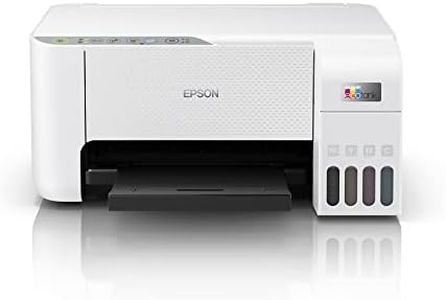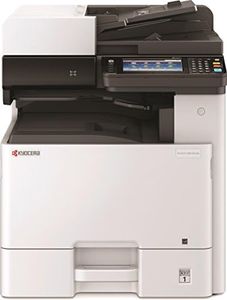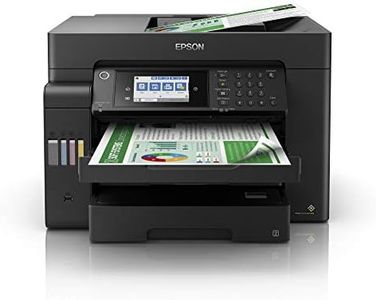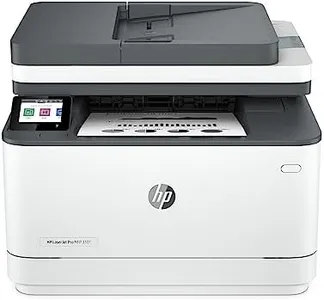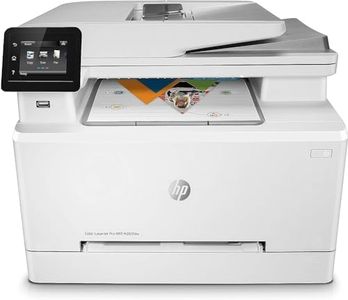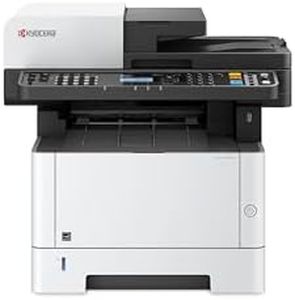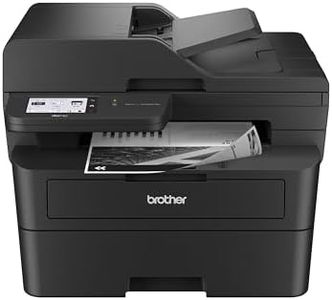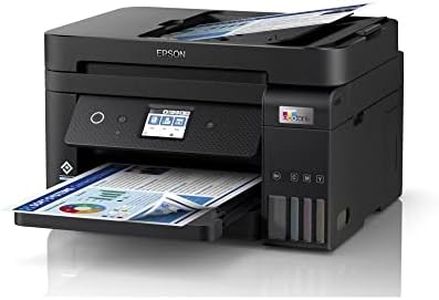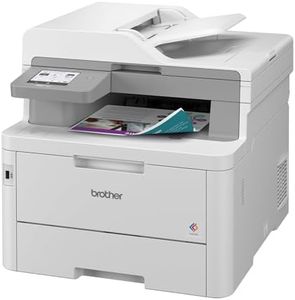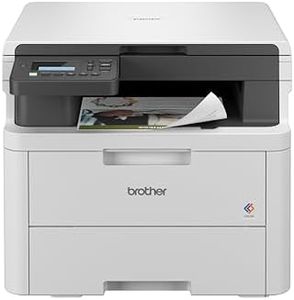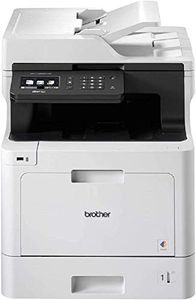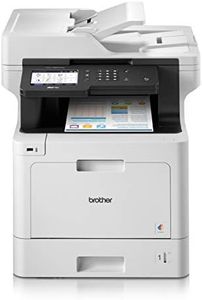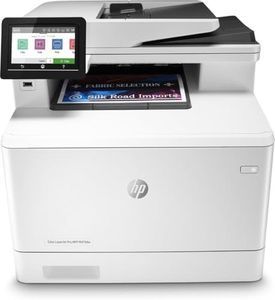We Use CookiesWe use cookies to enhance the security, performance,
functionality and for analytical and promotional activities. By continuing to browse this site you
are agreeing to our privacy policy
10 Best Multifunction Laser Printers
From leading brands and best sellers available on the web.Buying Guide for the Best Multifunction Laser Printers
When choosing a multifunction laser printer, it's important to focus on how you'll use it—think about your typical printing volume, the size and type of documents you'll handle, and whether you'll need additional functions like scanning or copying. Multifunction printers combine several devices in one, saving space and often making your home or office work more efficiently. Understanding the key specifications will help you avoid unnecessary features or missing out on essential ones.Print SpeedPrint speed tells you how many pages per minute (ppm) the printer can handle, and it matters because a faster printer is better suited for high-volume environments. Print speeds typically range from around 15 to 50 ppm. For occasional or low-volume use, a lower print speed is often enough; for busier offices or those printing many documents per day, look for something faster to avoid bottlenecks.
Print ResolutionPrint resolution, measured in dots per inch (dpi), determines how sharp and clear your documents will appear. Standard text printing usually doesn't need very high dpi, as 600 x 600 dpi is generally more than enough for most documents. If you also print graphics or need sharper images, consider models with higher resolution like 1200 x 1200 dpi or more. Assess your primary print tasks—if they're mostly text, don't overemphasize this number.
Functions AvailableMultifunction means the printer can handle other tasks beyond printing, such as scanning, copying, and faxing. Some models offer all-in-one capabilities (print, copy, scan, fax) while others might have only scanning and copying in addition to printing. Decide which features you'll use regularly, as having unnecessary functions can complicate usage without benefitting your workflow.
Connectivity OptionsConnectivity is how your printer communicates with computers and devices—options include USB, Ethernet, Wi-Fi, or even mobile printing. USB and Ethernet are stable, good for dedicated workstations, while Wi-Fi and mobile printing make it easier for multiple people or devices to print from anywhere. Think about your space and devices to decide which connections you'll need most frequently.
Duplex PrintingDuplex printing is the ability to print on both sides of the paper automatically. It's important because it saves paper and can make documents look more professional. Some printers require you to manually flip pages, while others do it automatically. If you often print multi-page documents or want to reduce paper use, look for automatic duplex capabilities.
Paper CapacityPaper capacity refers to how many sheets the input tray can hold before needing to be refilled. Smaller trays (100-150 sheets) are suitable for individual or light users, while larger trays (250+ sheets) are better for shared or heavy-duty use. Think about how often you want to refill the tray—if you print a lot, a larger capacity can save hassle.
Scanner FeaturesSince these printers have built-in scanners, consider the scanner's features, such as resolution and automatic document feeder (ADF) size. Standard flatbeds work for occasional scanning, while an ADF makes it easier to scan multipage documents quickly. If you need to digitize stacks of pages often, focus on models with efficient ADFs.
Monthly Duty CycleMonthly duty cycle refers to the maximum number of pages the printer can produce in a month without reliability issues. This helps you determine if the printer matches your average or peak printing needs. Light use might only need a few hundred pages per month, while busier settings need models designed for thousands of pages.
Size and FootprintMultifunction printers vary in size, some being compact enough for small desks and others more suited to dedicated spaces. Make sure the printer fits the available space and leaves enough room around it for easy access to trays and scanner lids. Assess your available workspace and pick a size that balances features with convenience.
